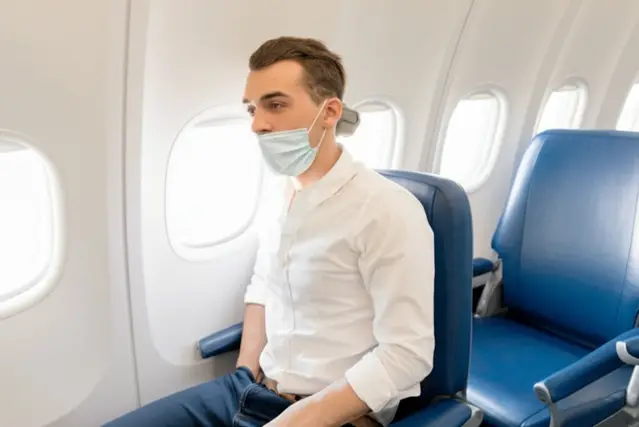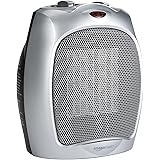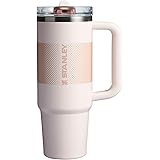Planning a trip? One of the most common questions travelers have is about bringing toiletries, specifically lotion, on a plane. Navigating the TSA’s (Transportation Security Administration) rules can be tricky, especially with updates and nuances that seem to change regularly.
This comprehensive guide will break down everything you need to know about bringing lotion on a plane in 2025, ensuring your travel experience is as smooth and stress-free as possible. We’ll cover the current TSA regulations, exceptions, helpful tips for packing, and frequently asked questions to address all your concerns.
Introduction: Lotion and Air Travel – A Common Conundrum
Air travel has evolved significantly, especially concerning security protocols. Understanding the rules surrounding liquids, aerosols, gels, creams, and pastes (LAGs) is crucial. Lotion, being a common travel essential for maintaining skin hydration, falls under these guidelines. While it may seem straightforward, the devil is in the details. Ignoring the regulations could lead to delays at security or even having your favorite lotion confiscated. Whether you’re a seasoned traveler or a first-time flyer, this guide will provide the clarity you need to pack confidently.
In 2025, the TSA continues to enforce the 3-1-1 rule for liquids in carry-on bags, but there are always nuances and exceptions. This article will delve deep into these, providing practical examples and actionable advice to help you navigate the security checkpoint with ease. We will also explore how these rules are evolving and what technological advancements may impact future travel regulations related to liquids.

Understanding the TSA 3-1-1 Rule: The Foundation of Liquid Travel
The TSA 3-1-1 rule is the cornerstone of regulations concerning liquids in carry-on baggage. It’s essential to grasp this rule to avoid any surprises at the security checkpoint.
What is the 3-1-1 Rule?
The 3-1-1 rule dictates that:
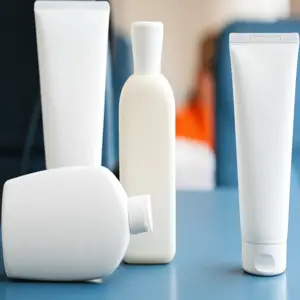
travel size lotion
- 3.4-ounce (100ml) container limit: All liquids, gels, aerosols, creams, and pastes must be in containers that are 3.4 ounces (100 milliliters) or less.
- 1 quart-sized bag: These containers must fit comfortably in one clear, quart-sized, resealable bag.
- 1 bag per passenger: Each passenger is limited to one quart-sized bag of liquids.
This rule applies to all carry-on baggage. If you are checking a bag, you have more flexibility with the size of your liquids, which we’ll discuss later.
Why Does the 3-1-1 Rule Exist?
The 3-1-1 rule was implemented in response to foiled terrorist plots involving liquid explosives. By limiting the quantity of liquids allowed in carry-on bags, the TSA aims to mitigate the risk of these threats. The rule is not about inconvenience; it’s about ensuring the safety and security of all passengers.
How the 3-1-1 Rule Applies to Lotion
Lotion is categorized as a liquid/cream under TSA guidelines. Therefore, the 3-1-1 rule applies directly to it. If you want to bring lotion in your carry-on, it must be in a container that is 3.4 ounces (100ml) or less, and it must fit inside your quart-sized bag.
Example: If you have a 6-ounce bottle of lotion, you cannot bring it in your carry-on, even if the bottle is only half full. It exceeds the 3.4-ounce limit. You would need to transfer it to a smaller, travel-sized container or pack it in your checked baggage.
The Importance of Clear, Quart-Sized Bags
Using a clear, quart-sized, resealable bag is not just a suggestion; it’s a requirement. TSA officers need to be able to easily inspect the contents of your liquid bag. A clear bag allows them to do this quickly and efficiently. Resealable bags are preferred because they help contain any potential leaks.
Many travelers opt for zip-top bags, such as Ziploc bags, as they are readily available and compliant with TSA guidelines. Reusable quart-sized bags designed specifically for travel are also a good option, offering durability and convenience.
Tip: Pack your liquids in the quart-sized bag so they are easily accessible during security screening. This will expedite the process and minimize any potential delays.
Carry-On vs. Checked Baggage: Where Should You Pack Your Lotion?
The rules for bringing lotion on a plane differ significantly depending on whether you are packing it in your carry-on or checked baggage. Understanding these differences is crucial for a smooth travel experience.
Lotion in Carry-On Baggage
As discussed earlier, the TSA 3-1-1 rule strictly applies to liquids, including lotion, in carry-on baggage. Here’s a recap:
- Maximum container size: 3.4 ounces (100ml)
- Must fit in a clear, quart-sized, resealable bag
- One bag per passenger
This means that any lotion you want to carry on the plane with you must adhere to these guidelines. Travel-sized lotions are ideal for this purpose. Many brands offer their popular lotions in travel-friendly sizes, making it easy to comply with the TSA rules. If your preferred lotion isn’t available in a travel size, you can purchase empty travel-sized bottles and decant the lotion into them.
Lotion in Checked Baggage
The rules for liquids in checked baggage are much more relaxed. You can bring larger quantities of lotion in your checked bag without the same restrictions as carry-on baggage. However, there are still some guidelines to be aware of:
- Quantity Limits: While there isn’t a specific size limit for individual containers of lotion in checked baggage, there is a limit on the total amount of liquids, aerosols, gels, creams, and pastes you can bring. The total aggregate quantity cannot exceed 70 ounces or 2 liters per passenger.
- Proper Packaging: It’s crucial to pack your lotion securely in your checked bag to prevent leaks. Consider placing the lotion in a zip-top bag or wrapping it in plastic wrap.
- Prohibited Items: Some items are prohibited in both carry-on and checked baggage, such as flammable liquids. Lotion is generally not considered flammable, but it’s always a good idea to check the product label for any warnings.
Tip: Place liquids in the center of your suitcase, surrounded by soft items like clothing, to provide cushioning and minimize the risk of damage during transit.
Decision-Making: Carry-On or Checked Baggage?
The decision of whether to pack your lotion in your carry-on or checked baggage depends on several factors:
- Trip Length: For short trips, travel-sized lotions in your carry-on might be sufficient. For longer trips, you may need to bring larger quantities in your checked baggage.
- Lotion Type: If you have a specific type of lotion you prefer, and it’s not available in travel sizes, packing it in your checked baggage might be the only option.
- Baggage Fees: Consider the cost of checked baggage fees. If you can fit all your essentials in your carry-on, you can avoid these fees. However, exceeding the carry-on size or weight limits can also result in fees.
- Convenience: Having lotion readily available in your carry-on can be convenient, especially on long flights. However, the restrictions may outweigh the convenience for some travelers.
Real-World Example: Sarah is going on a week-long trip. She prefers a specific brand of lotion that only comes in a large bottle. To avoid checked baggage fees, she purchases several travel-sized bottles, fills them with her favorite lotion, and packs them in her quart-sized bag. She also packs an extra refill bottle in her checked baggage, ensuring she has enough lotion for the entire trip without exceeding the limits.
Exceptions to the 3-1-1 Rule: Medical and Other Necessary Liquids
While the 3-1-1 rule is generally strict, there are exceptions for medically necessary liquids and certain other items. Understanding these exceptions can be crucial if you have specific needs or conditions.
Medically Necessary Liquids
The TSA makes exceptions for medically necessary liquids, including lotions prescribed by a doctor or needed for medical conditions. If you need to bring a larger quantity of lotion for medical reasons, you are generally allowed to do so, but you must follow certain guidelines:
- Notification: Inform the TSA officer at the security checkpoint that you have medically necessary liquids.
- Documentation: While not always required, it’s recommended to have documentation from your doctor explaining the medical necessity of the lotion. This could be a prescription or a letter from your physician.
- Separation: Separate the medically necessary liquids from your other liquids when going through security.
- Screening: Be prepared for additional screening of the medically necessary liquids. This may involve opening the containers for inspection.
Important Note: The final decision on whether to allow medically necessary liquids rests with the TSA officer at the security checkpoint. Having documentation and being prepared to explain your needs can significantly increase the likelihood of a smooth screening process.
Other Exceptions
Besides medically necessary liquids, there are a few other exceptions to the 3-1-1 rule:
- Baby Formula and Breast Milk: The TSA allows reasonable quantities of baby formula and breast milk, even if they exceed the 3.4-ounce limit. You should inform the TSA officer that you have these items and be prepared for additional screening.
- Medications: Liquid medications, including over-the-counter and prescription medications, are also generally exempt from the 3.4-ounce limit. Again, you should inform the TSA officer and be prepared for additional screening.
- Life-Support and Life-Sustaining Liquids: The TSA makes accommodations for life-support and life-sustaining liquids. Notify the TSA officer and be prepared for additional screening.
Tip: When traveling with medically necessary liquids or other exempt items, it’s always a good idea to check the TSA website or contact the TSA Contact Center for the most up-to-date information and guidelines. Rules and procedures can change, and it’s best to be prepared.
Packing Tips: Ensuring Your Lotion Travels Safely and Compliantly
Even with a solid understanding of the TSA rules, proper packing is essential to ensure your lotion travels safely and compliantly. Here are some practical tips to help you pack your lotion like a pro.
Choosing the Right Containers
The right containers can make all the difference when packing lotion for air travel:
- Travel-Sized Bottles: Invest in high-quality travel-sized bottles that are specifically designed for liquids. Look for bottles that are leak-proof and durable.
- Silicone Bottles: Silicone bottles are a popular choice for travel because they are flexible, lightweight, and easy to squeeze. They also tend to be more leak-resistant than hard plastic bottles.
- Refillable Tubes: Refillable tubes are another convenient option, especially for thicker lotions and creams.
- Original Packaging: If possible, use the original packaging of your lotion. This can help prevent leaks and make it easier to identify the contents.
Preventing Leaks
Leaks are a common concern when traveling with liquids. Here are some tips to prevent lotion from leaking in your bag:
- Tighten Lids: Make sure the lids of your lotion bottles are tightly sealed.
- Wrap with Plastic Wrap: Wrap the neck of the bottle with plastic wrap before screwing on the lid. This creates an extra layer of protection against leaks.
- Use a Zip-Top Bag: Place the lotion bottle inside a zip-top bag, even if you’re packing it in your checked baggage. This will contain any leaks that do occur.
- Leave Some Airspace: Don’t fill the bottle completely full. Leaving some airspace allows for expansion and contraction due to changes in air pressure.
- Store Upright: If possible, store your lotion bottles upright in your bag. This can help prevent leaks, especially if the lids aren’t perfectly sealed.
Organizing Your Liquid Bag
A well-organized liquid bag can make the security screening process much smoother:
- Accessibility: Place the liquid bag on top of your carry-on bag so it’s easily accessible during security screening.
- Visibility: Ensure that all items in the liquid bag are visible to the TSA officer. Avoid overcrowding the bag.
- Separate Medically Necessary Liquids: If you are traveling with medically necessary liquids, keep them separate from your other liquids.
Alternatives to Liquid Lotion
If you want to avoid the hassle of dealing with liquid lotion altogether, consider using alternative products:
- Lotion Bars: Lotion bars are solid lotions that come in a bar form. They are easy to pack and don’t count as liquids under TSA guidelines.
- Solid Moisturizers: Similar to lotion bars, solid moisturizers provide hydration without the liquid form.
- Lotion Wipes: Lotion wipes are individually wrapped towelettes infused with moisturizing lotion. They are convenient for travel and don’t count as liquids.
Real-World Example: John is a frequent flyer. He switched to using lotion bars instead of liquid lotion to simplify his travel packing. He finds that lotion bars are just as effective at moisturizing his skin and he no longer has to worry about leaks or the 3-1-1 rule.
Current Trends and Statistics: Lotion and Travel in 2025
Understanding current trends and statistics can provide valuable insights into how people are traveling with lotion and other toiletries in 2025.
Increased Demand for Travel-Sized Products
The demand for travel-sized products, including lotion, continues to grow. This is driven by several factors:
- TSA Regulations: The TSA 3-1-1 rule has created a need for smaller, travel-friendly versions of popular products.
- Carry-On Only Travel: More travelers are opting to travel with carry-on baggage only to avoid checked baggage fees and the hassle of checking bags.
- Convenience: Travel-sized products are simply more convenient for travel, regardless of whether you’re checking a bag or not.
According to a recent report by Market Research Future, the global travel-sized products market is projected to reach $33.8 billion by 2028, growing at a CAGR of 6.8% from 2021 to 2028. This indicates a strong and growing trend in the demand for travel-friendly toiletries.
Popularity of Solid Alternatives
Solid alternatives to liquid lotions, such as lotion bars and solid moisturizers, are gaining popularity. This trend is driven by:
- TSA Compliance: Solid products don’t count as liquids under TSA guidelines, making them a convenient alternative.
- Sustainability: Many solid lotion products are made with natural and eco-friendly ingredients, appealing to environmentally conscious travelers.
- Less Mess: Solid products are less likely to leak or spill, making them a more convenient and mess-free option.
Many small businesses and artisan crafters are now offering handmade lotion bars and solid moisturizers, catering to the growing demand for these products. This trend reflects a broader shift towards more sustainable and eco-friendly travel practices.
Impact of COVID-19 on Travel Toiletries
The COVID-19 pandemic has had a significant impact on travel patterns and preferences, including the types of toiletries travelers are bringing:
- Increased Focus on Hygiene: Travelers are more conscious of hygiene and are bringing more hand sanitizer, disinfectant wipes, and other hygiene products.
- Demand for Individual Packaging: There is a greater demand for individually packaged toiletries to minimize the risk of contamination.
- Changes in Travel Frequency: While travel has rebounded, some travelers are still hesitant to fly, which can impact the frequency with which they purchase travel-sized toiletries.
While the pandemic has introduced new considerations, the basic TSA rules regarding liquids, including lotion, remain unchanged. Travelers should continue to follow the 3-1-1 rule and pack their toiletries accordingly.
Navigating Airport Security: Tips for a Smooth Screening Process
The airport security screening process can be stressful, but with proper preparation, you can navigate it smoothly and efficiently. Here are some tips to help you through security with your lotion and other toiletries.
Be Prepared
Preparation is key to a smooth security screening:
- Know the Rules: Familiarize yourself with the TSA 3-1-1 rule and any other relevant regulations.
- Pack Strategically: Pack your liquid bag on top of your carry-on bag so it’s easily accessible.
- Dress Appropriately: Wear shoes that are easy to remove and avoid wearing clothing with metal embellishments.
At the Security Checkpoint
Follow these steps at the security checkpoint:
- Remove Your Liquid Bag: Take your liquid bag out of your carry-on bag and place it in a separate bin.
- Remove Electronics: Remove laptops and other large electronics from your bag and place them in a separate bin.
- Remove Outerwear: Remove jackets, belts, and other outerwear and place them in a bin.
- Follow Instructions: Listen carefully to the instructions of the TSA officers and follow their directions.
If You’re Selected for Additional Screening
If you’re selected for additional screening, don’t panic. It’s a routine procedure. Cooperate with the TSA officers and answer their questions honestly.
- Stay Calm: Remain calm and polite throughout the screening process.
- Answer Questions: Answer the TSA officers’ questions truthfully and to the best of your ability.
- Allow Inspection: Allow the TSA officers to inspect your bags and belongings.
TSA PreCheck and Global Entry
Consider enrolling in TSA PreCheck or Global Entry to expedite the security screening process. These programs allow pre-approved travelers to go through a faster security line and avoid removing shoes, belts, and light outerwear. However, even with TSA PreCheck, the 3-1-1 rule still applies to liquids in carry-on bags.
Real-World Example: Maria is a TSA PreCheck member. While she still needs to follow the 3-1-1 rule for her lotion, she can keep her shoes and belt on, and she doesn’t have to remove her laptop from her bag. This significantly speeds up her security screening process.
What Happens If You Violate the TSA Rules?
Understanding the consequences of violating the TSA rules can help you avoid potential problems at the airport.
Confiscation of Items
The most common consequence of violating the TSA rules regarding liquids is the confiscation of the prohibited items. If you try to bring a lotion bottle larger than 3.4 ounces in your carry-on bag, the TSA officer will likely confiscate it.
Delays and Inconvenience
Violating the TSA rules can also cause delays and inconvenience. You may be held up at the security checkpoint while the TSA officers inspect your bags and belongings. This can cause you to miss your flight or be late for your connection.
Fines and Penalties
In some cases, violating the TSA rules can result in fines and penalties. This is more likely to occur if you are intentionally trying to circumvent the rules or if you are carrying prohibited items that pose a security threat. Consult the TSA website for the latest information on fines and penalties.
Legal Consequences
In extreme cases, violating the TSA rules can lead to legal consequences. This is most likely to occur if you are carrying illegal items or if you are interfering with the security screening process.
Important Note: It’s always best to err on the side of caution and follow the TSA rules carefully. If you’re unsure about whether an item is allowed, check the TSA website or contact the TSA Contact Center.
Alternative Ways to Obtain Lotion While Traveling
If you don’t want to bring lotion with you on your trip, there are several alternative ways to obtain it while traveling.
Purchase at Your Destination
The easiest way to get lotion while traveling is to purchase it at your destination. Most hotels, pharmacies, and grocery stores sell a wide variety of lotions. This eliminates the need to pack lotion and worry about the TSA rules.
Hotel Amenities
Many hotels provide complimentary toiletries, including lotion. Check with your hotel to see what amenities they offer. Even if your hotel doesn’t provide lotion, they may be able to provide you with a sample or direct you to a nearby store where you can purchase it.
Subscription Boxes
Consider subscribing to a travel-sized toiletries subscription box. These boxes contain a variety of travel-sized toiletries, including lotion, that are delivered to your home on a regular basis. This can be a convenient way to ensure that you always have travel-sized toiletries on hand.
Ask Friends or Family
If you’re visiting friends or family, ask them if they can provide you with lotion. This can be a convenient and cost-effective way to get lotion while traveling.
Future Trends in TSA Regulations Regarding Liquids
TSA regulations are not static; they evolve in response to new threats and technological advancements. Here are some potential future trends in TSA regulations regarding liquids:
Advanced Screening Technologies
The TSA is constantly exploring new technologies to improve the screening of liquids. Some of these technologies include:
- 3D Scanning: 3D scanning technology can provide a more detailed image of the contents of your bag, allowing TSA officers to identify potential threats more easily.
- Computed Tomography (CT) Scanners: CT scanners can create a 3D image of the contents of your bag, allowing TSA officers to see inside containers without opening them.
- Artificial Intelligence (AI): AI can be used to analyze images from scanners and identify potential threats automatically.
These advanced screening technologies could eventually allow the TSA to relax the 3-1-1 rule, as they would be able to identify liquid explosives and other threats more effectively. Airports are slowly starting to implement this technology nationwide, and it will likely be the future of TSA checkpoints.
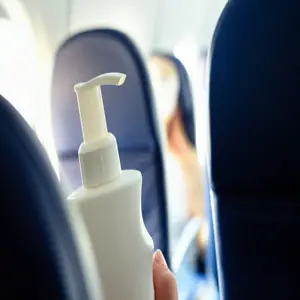
TSA approved lotion
Relaxation of the 3-1-1 Rule
While there are no immediate plans to eliminate the 3-1-1 rule, it’s possible that it could be relaxed in the future as screening technologies improve. The TSA may allow larger quantities of certain liquids, or they may eliminate the need for passengers to place liquids in a clear bag. The UK has already started to relax these rules in some airports that have these new CT scanners, and this may be a trend we see stateside in the future.
Increased Focus on Sustainability
There is a growing focus on sustainability in the travel industry. The TSA may implement policies to encourage travelers to use reusable containers and reduce waste. This could include providing incentives for travelers who bring their own reusable liquid bottles or partnering with companies that offer sustainable travel-sized toiletries.
Lotion for Specific Skin Conditions: TSA Considerations
Individuals with specific skin conditions, such as eczema or psoriasis, often require specialized lotions or creams. It’s essential to understand how TSA regulations apply to these medically necessary items.
Prescription vs. Over-the-Counter Lotions
The TSA generally treats prescription and over-the-counter lotions differently. As mentioned earlier, medically necessary liquids, including prescription lotions, are typically exempt from the 3.4-ounce limit. However, it’s always recommended to have documentation from your doctor, such as a prescription or a letter, to explain the medical necessity of the lotion.
Over-the-counter lotions, on the other hand, are usually subject to the 3.4-ounce limit unless you have a medical condition that requires a larger quantity. In that case, you should follow the same guidelines as for prescription lotions: notify the TSA officer, have documentation, and be prepared for additional screening.
Packing Strategies for Sensitive Skin
If you have sensitive skin, you’ll want to take extra care when packing your lotion:
- Choose Fragrance-Free and Dye-Free Lotions: Fragrances and dyes can irritate sensitive skin. Choose lotions that are specifically formulated for sensitive skin and are free of these ingredients.
- Pack in a Separate Bag: Consider packing your lotion in a separate bag to prevent it from coming into contact with other toiletries that may contain irritants.
- Bring Extra: It’s always a good idea to bring extra lotion in case you need it. Changes in climate and environment can exacerbate skin conditions, so it’s better to be prepared.
Dealing with Dry Skin on Airplanes
The air on airplanes is notoriously dry, which can worsen skin conditions. Here are some tips for dealing with dry skin on airplanes:
- Apply Lotion Frequently: Apply lotion frequently throughout the flight to keep your skin hydrated.
- Drink Plenty of Water: Dehydration can contribute to dry skin. Drink plenty of water throughout the flight.
- Avoid Harsh Soaps: Avoid using harsh soaps in the airplane lavatories, as they can strip your skin of its natural oils.
- Use a Humidifier: Consider using a personal humidifier to add moisture to the air around you.
International Travel: Lotion Rules in Other Countries
While this article primarily focuses on TSA rules in the United States, it’s important to be aware that other countries may have different regulations regarding liquids in carry-on baggage.
Varying Liquid Restrictions
Many countries follow similar rules to the TSA 3-1-1 rule, but there may be slight variations. Some countries may have stricter limits on the size of liquid containers, while others may have different requirements for packaging.
For example, the European Union (EU) has similar rules to the TSA 3-1-1 rule, but they may have different interpretations of what constitutes a “liquid.” It’s always a good idea to check the specific regulations of the countries you’ll be traveling to.
Customs Regulations
In addition to security regulations, you should also be aware of customs regulations. Some countries may have restrictions on the types of products you can bring into the country, including lotions. For example, some countries may prohibit the import of products containing certain ingredients.
Researching Before You Fly
The best way to ensure a smooth travel experience is to research the regulations of the countries you’ll be traveling to before you fly. You can usually find this information on the websites of the airport, airline, or government of the country. You can also contact the embassy or consulate of the country for more information.
Tip: Print out a copy of the regulations and bring it with you in case you encounter any issues at the airport.
Common Mistakes to Avoid When Packing Lotion
Even experienced travelers can make mistakes when packing lotion. Here are some common mistakes to avoid:
Overfilling Bottles
One of the most common mistakes is overfilling lotion bottles. As mentioned earlier, leaving some airspace in the bottle allows for expansion and contraction due to changes in air pressure, which can help prevent leaks.
Additionally, overfilling bottles can make it difficult to seal them properly, increasing the risk of leaks.
Using Non-Compliant Containers
Another common mistake is using containers that are not compliant with the TSA 3-1-1 rule. This includes using containers that are larger than 3.4 ounces or using non-clear bags. Make sure to use containers and bags that meet the TSA requirements to avoid having your lotion confiscated.
Forgetting to Declare Medically Necessary Liquids
Forgetting to declare medically necessary liquids is another common mistake. If you’re traveling with medically necessary lotion, make sure to inform the TSA officer at the security checkpoint and be prepared to provide documentation.
Failure to declare medically necessary liquids can result in delays and inconvenience.
Not Protecting Against Leaks
Not taking adequate precautions to protect against leaks is another common mistake. As mentioned earlier, wrap the neck of the bottle with plastic wrap, place the bottle in a zip-top bag, and store it upright in your bag.
Taking these precautions can help prevent leaks and protect your belongings.
Staying Updated on TSA Regulations
TSA regulations can change, so it’s important to stay updated on the latest rules and guidelines. Here are some ways to stay informed:
TSA Website
The TSA website is the best source of information on TSA regulations. The website includes detailed information on the 3-1-1 rule, as well as other security procedures. You can also find answers to frequently asked questions and sign up for email updates.
TSA Contact Center
If you have specific questions about TSA regulations, you can contact the TSA Contact Center. The Contact Center is staffed by TSA employees who can provide you with answers to your questions.
Social Media
The TSA also has a presence on social media, including Twitter and Facebook. Follow the TSA on social media to stay updated on the latest news and announcements.
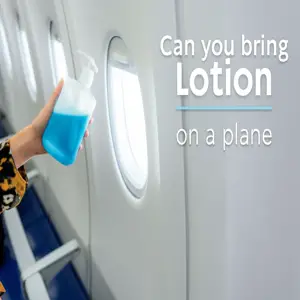
airplane toiletries
Travel Blogs and Forums
Travel blogs and forums can also be a good source of information on TSA regulations. However, be sure to verify the information you find on these sources with the TSA website or Contact Center.
FAQ: Frequently Asked Questions About Bringing Lotion on a Plane
Here are some frequently asked questions about bringing lotion on a plane, addressing common concerns and providing clear answers.
Can I bring a travel-sized lotion (3.4 oz or less) in my carry-on bag?
Yes, you can bring a travel-sized lotion in your carry-on bag as long as it is 3.4 ounces (100ml) or less and fits in your clear, quart-sized, resealable bag. This is in accordance with the TSA 3-1-1 rule.
Can I bring a full-sized lotion bottle in my checked baggage?
Yes, you can bring a full-sized lotion bottle in your checked baggage. There are no size restrictions for individual containers of lotion in checked baggage, but the total aggregate quantity of liquids, aerosols, gels, creams, and pastes cannot exceed 70 ounces or 2 liters per passenger.
Do I need to declare my lotion at the security checkpoint?
No, you do not need to declare your lotion at the security checkpoint, unless it is a medically necessary lotion that exceeds the 3.4-ounce limit. In that case, you should inform the TSA officer and be prepared to provide documentation.
What happens if my lotion bottle is slightly larger than 3.4 ounces?
If your lotion bottle is slightly larger than 3.4 ounces, the TSA officer will likely confiscate it. It’s best to err on the side of caution and use a bottle that is exactly 3.4 ounces or less.
Can I bring multiple travel-sized lotion bottles in my carry-on bag?
Yes, you can bring multiple travel-sized lotion bottles in your carry-on bag as long as each bottle is 3.4 ounces or less and all the bottles fit comfortably in your clear, quart-sized, resealable bag.
Are lotion bars subject to the 3-1-1 rule?
No, lotion bars are not subject to the 3-1-1 rule because they are solid, not liquid. You can bring lotion bars in your carry-on or checked baggage without any restrictions.
Can I bring lotion wipes on a plane?
Yes, lotion wipes can be brought on a plane. Because they contain minimal liquid, they are usually exempt from the 3-1-1 rule and are considered a convenient travel option.
What if I need to bring a larger quantity of lotion due to a medical condition?
If you need to bring a larger quantity of lotion due to a medical condition, inform the TSA officer at the security checkpoint that you have medically necessary liquids. While not always required, it’s recommended to have documentation from your doctor explaining the medical necessity of the lotion,
Conclusion: Travel with Confidence—Lotion and Beyond
Navigating TSA regulations for lotion and other toiletries doesn’t have to be stressful. By understanding the 3-1-1 rule, packing strategically, and staying informed about exceptions (like medically necessary liquids), you can breeze through security without sacrificing your skincare routine.
Key Takeaways:
- Stick to 3.4 oz or smaller containers for carry-on lotions, and pack them in a clear quart-sized bag.
- Checked baggage offers more flexibility—feel free to bring full-sized bottles, but pack them securely to prevent leaks.
- Medically necessary lotions are exempt from size limits, but always declare them and carry documentation.
- Consider solid alternatives (like lotion bars) or buy toiletries at your destination to simplify your packing.
- Stay updated on TSA changes, especially as new screening technologies may relax liquid rules in the future.
Final Thought:
Travel is about adventure, not anxiety over toiletries. With these tips, you’re equipped to pack smart, comply with regulations, and focus on what really matters—enjoying your journey. Whether you’re moisturizing mid-flight or stocking up at your destination, your skin (and your stress levels) will thank you.
Next time you fly, toss that travel-sized lotion in your bag with confidence—and go explore!

